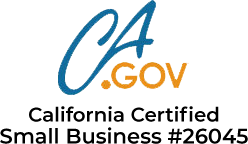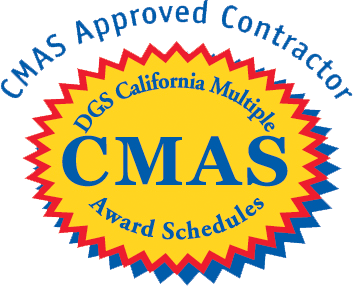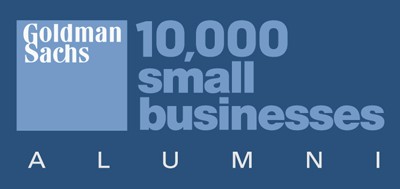Lecture capture, Azusa, is a powerful learning tool gaining popularity due to the rise of hybrid work, online education, and video-centered content. What was once a labor-intensive process involving an entire video production staff can now happen with the click of a button. As a result, businesses, religious organizations, and academic institutions increasingly embrace its advantages to enhance learning outcomes. The freedom for students to view lectures when convenient for them enhances their learning outcomes. In addition, students can review challenging material until they grasp the lesson concepts. This puts the student in the best possible position to learn and retain material.
What Is Lecture Capture?
 Lecture capture is a term that broadly refers to recording lectures or presentations to be available to learners. Typically, lecture capture solutions record video using a video management system or (VMS). VMS programs are either software or hardware.
Lecture capture is a term that broadly refers to recording lectures or presentations to be available to learners. Typically, lecture capture solutions record video using a video management system or (VMS). VMS programs are either software or hardware.
Depending on the type of lecture you aim to create, various options are available for recording. These include audio recording, PowerPoint slide recording, or desktop screen recording. Additionally, you have the option of recording a video with a presenter. For example, a Video Management System (VMS) can capture multiple streams at once, allowing you to record audio, visual aids, and the background (virtual or physical) simultaneously.
What Are the Benefits of Lecture Capture in Azusa?
Accessible, inclusive, and cost-effective — capturing lectures has many benefits. Lecture recordings are a valuable learning resource. There are three key areas lecture capture benefits learners most. First, it is beneficial as a study aid. In addition, it is a helpful resource to review complex material and catch up on missed classes.
Video lectures are an engaging way to deliver learning content. Moreover, lecture capturing makes training more accessible to learners who cannot attend in-person classes due to disability, illness, or other circumstances. In short, lecture capture systems can significantly enhance the learning experience in classrooms and corporate training scenarios.
Hardware- vs. Software-Based Lecture Capture
The right lecture capture management tool is the one that meets your needs whether you choose a software- or hardware-based lecture capture system. To help you make an educated decision, here are the pros and cons of each option.
Recording With Lecture Capture Hardware
It is usually in a physical location like the lecture hall. Lecture capture hardware records and stream lectures and presentations. Therefore, it is best suited for a traditional classroom or lecture hall setting.
Advantages
- After initial setup, instructors do not
- Can record multiple cameras.
- Effectively capture HD and SD video with audio.
- Schedule lecture capture sessions in advance.
- Effectively capture larger lecture halls or event spaces.
- Hardware systems are known for their reliability and ability to provide high-quality results.
Disadvantages
- A technical support team will need to set up and maintain the hardware.
- Hardware technology tends to become outdated quickly.
- Lack of flexibility in set lecture recording times and locations.
- Lengthy initial setup.
- Cannot edit or add visual aids to the lecture capture.
Recording with Lecture Capture Software
Azusa lecture capture software lets you record, manage, and stream video lectures on any device. The software allows you to do this from your computer without an external apparatus. It is best suited for recording lectures outside a classroom, such as from your office or home.
Pros
- Record lectures anywhere and at any time
- Optimal for remote and hybrid instructors
- A fully scalable system allows the capture of stadium presentations to one-on-one meetings.
- Lecture recordings are editable to enhance learner engagement or to cut out outdated information.
- Use lecture content in multiple ways, like for online courses and social media.
- Lecture capture software is sharable. So, teams can use it when and where they need it.
- Instructors have complete control over the recording process.
- Easy setup means less need for a tech support team to set up the system.
Cons
- Limited ability to record lectures with multiple cameras or angles.
- Instructors must receive basic software training during onboarding.
- Cost to buy software and assign and register licenses.
- Instructors are responsible for the camera, microphone, and lighting setup.
- Audio and video quality can suffer without quality control over the cameras and microphones.
How to Record a Lecture
Lecture capture tools adapted to different learning needs, teaching styles, and learning environments. For example, you can press record and capture an entire lecture or add audio, images, infographics, and quizzes to your video. You can also edit the video for a polished result. Do not worry if you have never recorded a lecture before. It is easier than you think. Here is a step-by-step guide.
To ensure that the audience focuses on the instructor during a lecture, it is essential to have a clean, tidy background that is free from distractions. Similarly, when recording a video with a presenter or a screencast, it is crucial to get the optics right.
To accomplish this, as mentioned, use a clutter-free background. Also, set the lighting brightness and angle appropriately. Minimizing visual distraction while focusing attention on the instructor is critical. Follow the checklist below to make sure everything is ready to record.
Pre-Recording Checklist
- Find a quiet, clutter-free recording area. Ideally, a white wall makes the best background.
- Add character to the recording space with a potted plant, framed art, or cut flower vase.
- Find a light source for the recording area and let it shine onto the background from the camera’s direction. For a flattering look, use a ring light.
- Position your computer or webcam at eye level and only show the top of your torso.
- When recording your screen, remove distractions. Turn off notifications—close apps. Hide bookmarks. Deactivate alarms. Close any other items and clean up the computer’s desktop to avoid unintentional interruptions. Additionally, close, hide, or remove personal or private information now.
- Prepare the lecture capture system so it is ready to record. Load the video lecture software. Turn on the ring light and other technology like the external microphone.
Recording A Lecture
Now for the most critical part. Once you complete the setup, start recording. If you capture a lecture with participants, always get their consent before recording. Finally, remember to hit the record button before starting the presentation.
Edit the Video
Congratulations on successfully recording your lecture! It is time to give it a more professional finish by making a few edits. You can edit out any unwanted sections, disruptions, glitches, or errors to guarantee a polished final product.
Consider using lecture capture software with a built-in editor to simplify editing. You want to make seamless edits without adding extra steps. Aside from trimming your video content, you can add interactive elements to make your lecture more engaging. Some lecture capture software allows you to include quizzes, annotations, animations, and hotspots in your lecture.
When used appropriately, interactivity and visual aids capture learners’ attention and enhance engagement. However, it is essential not to go overboard. Edits should enhance the learning experience, not detract from it.
Save And Share The Video
Once the video is complete, the final step is to save and share it. Sharing the video will require uploading it. Most higher learning institutions will use Learning Management System (LMS) software with cloud-based storage.
With an LMS, users can watch the recording on any device, whether a computer, tablet, laptop, or cell phone. And these platforms have content and user management capabilities and robust reporting and analytics functions.
Lecture Capture Tips
Mastering lecture capturing takes time and practice. However, some golden rules can quickly take you from a novice to a pro. We have listed some critical best practices below.
Know How You Will Use the Content
Set clear goals. Identify a goal for the lecture capture and relate all content to meet that goal. Before capturing a lecture, deciding how you plan to use it is essential. You should also consider if you want to reuse the content, as it could impact what you record and how you set up the lecture. For example, suppose your organization intends to reuse the lecture as part of a more comprehensive online course. In that case, ensure that the setting and format of the lecture align with the other course content to maintain consistency.
Make Evergreen Content
To make your lecture capture content evergreen and optimize its shelf life, you should avoid using time-specific references such as dates, current events, and seasons.
Include Engaging Elements
To engage your audience, consider using visuals, examples, personal stories, and interactive elements in your presentation.
Do A Run-Through Before Recording
Before delivering your lecture, doing a test run by recording a video is good practice to ensure adequate background, lighting, sound, and video quality.
Rewatch Recordings To Improve
Rewatch your lecture captures. Improve your lecture-capturing skills by rewatching them and taking notes. For instance, slow down fast speech so learners can understand your words.
How to Choose The Best Lecture Capture Solution
In today’s rapidly evolving education landscape, lecture capture solutions are increasingly important for learning institutions. Finding the right solution for your organization can be challenging with various market options.
To select the best lecture capture solution, consider your specific use cases to determine the necessary features and capabilities. For example, if you primarily need to record lectures through screen capture on a computer, you may require a solution with robust software-based capabilities. Alternatively, if you need to capture more complex presentations in front of a classroom, you may require hardware-based solutions with high-quality audio and video sources.
It is also essential to consider how you plan to use the recorded lectures. Is the content for live streaming or will it be on a hosted site for archival viewing? Knowing your uses and how you will use the software can make choosing the right lecture recording solution easier.
Each solution on the market has different features, integrations, and abilities. Therefore, it is crucial to carefully evaluate each option to find the one that best fits your institution’s unique needs. While the selection process may seem overwhelming, taking the time to consider your specific use cases and evaluating each option based on its pros and cons will help in making an educated decision and choosing a lecture capture solution that will help your institution deliver high-quality educational content.
10 Lecture Capture Factors And Features To Consider
When selecting a lecture capture solution for your business or academic institution, it is crucial to consider several key factors. These factors include the solution’s functionality, compatibility, ease of use, and available support. By evaluating these areas, you will be better able to choose the lecture capture solution that meets your organization’s unique needs.
Functionality: First, you should consider the functionality of the solution. Does it include features like live streaming, editing tools, or automatic captioning?
Integration: How well does the content capture software integrate with existing technology? And it is likely to integrate with future technology. Additionally, it is best to consider whether the solution is compatible with your existing hardware and software infrastructure.
Ease Of Use: Is the solution intuitive and user-friendly, or will it require extensive training for your staff? The latter may result in additional costs and time investments not reflected in the initial purchase price.
Support: Consider the level of support with the lecture capture solution. Will your organization have access to technical support and customer service? Can resources like tutorials or user manuals help your staff troubleshoot issues?
Playback: Can viewers watch videos from various devices, such as laptops, desktop computers, tablets, or mobile devices?
Captions: Does the solution auto-generate captions, or can users add video captions?
Scheduling: Are remote users able to schedule lectures for future viewing?
Storage: Does the lecture recording solution provide adequate cloud storage for safe, easy, and convenient lecture storage?
Data: Is real-time data accessible, like the number of current lecture viewers?
Scalability: Does it allow for easy expansion and updates?
FAQs on Lecture Capturing Technology
Let us briefly examine several frequently asked questions about lecture capture.
What is the easiest way to capture a live class?
If you want to record an in-person lecture, the easiest way is with a camera, a tripod, and a microphone in the classroom. Ensure the camera is at an angle that captures the instructor and the whiteboard with minimal obstructions. You can also place the microphone overhead, in front of the instructor, or attach it to their clothing. Once you have recorded the lecture, you can edit and enhance the lecture with video editing software once you have recorded it.
What is the best way to record a lecture capture to share it online?
Using a lecture-capturing tool with recording and editing features. There are lecture recording apps where you can edit your recordings, eliminate background noise, add transitions, and annotate your videos. In addition, some tools or apps are also content-authoring tools that allow you to create online courses,, and quizzes.
What is Asynchronous Online Learning?
Asynchronous learning means that the course’s instructor and students all engage with the course content at different times (and from different locations). The instructor provides students with a sequence of units that the students move through at their own pace.
Is Lecture Capture Asynchronous Online Learning?
Electronic learning, or e-learning, is now a fundamental part of higher education. Nearly every course has an e-learning component. Within e-learning, lecture capture is an asynchronous option that allows students to view archived lectures for on-demand playback. It’s important to note that lecture capture is not limited to professor lectures. It can also record student presentations, team activities, demonstrations, training, guest speakers, and other campus events.
For Azusa Classroom Technology Solutions Contact Us
Higher education is becoming increasingly remote, so the best lecture capture systems and technology have become essential. Video lecture content and production quality must remain high to engage students with ever-increasing expectations. The video creation tools and technology for higher education will continue to adhere to accessibility, equity, and diversity standards. Flexible lecture capture systems that create the highest quality video and audio lectures remain a top priority. Azusa lecture capture makes on-demand instruction available to an unlimited number of learners.
Vizual Symphony offers education tech integration solutions for higher education. From active learning classrooms to lecture capture to video conferencing. We are the audio-visual integrators that lead the way in academic technology.
Partnering with an audio-visual integrator specializing in higher education classroom technology will give colleges and universities a competitive edge. Recording lessons and archiving a bank of educational material allows higher education instruction and learning to occur 24/7 and from anywhere. Colleges and universities must implement lecture capture and streaming solutions to engage students, compete in the marketplace, and ensure the best learning outcomes.
To see more of our work check our case studies and our gallery. Vizual Symphony integrates lecture capture in Azusa for higher education. Please contact us today for a free consultation to see how lecture capture can work for you—call (626) 229 9112.




